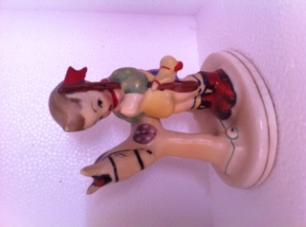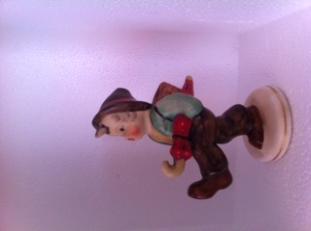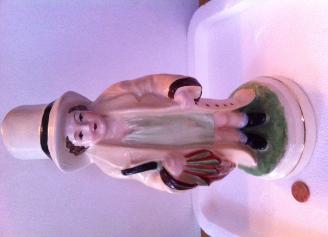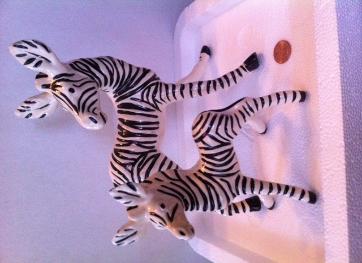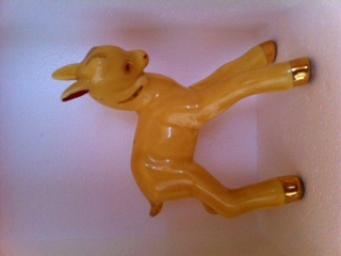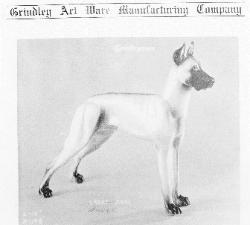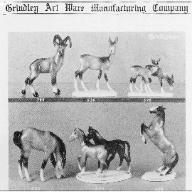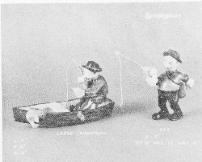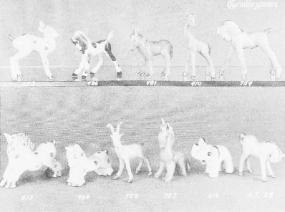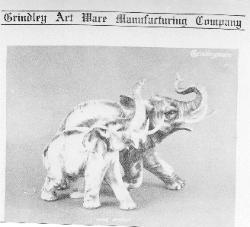

| Grindley Artware |
| Sebring Ohio Historical Society 126 North 15th Street Sebring, Ohio 44672 330-938-6920 |
| Art Grindley, Jr. has graciously allowed us use of the photos that follow. The photos are copyrighted, and used with permission. If you would allow us to photograph or would send us photos of your piece, we'd much appreciate it. We also accept tax deductible donations. |

| The Grindley Artware Manufacturing Company made figural pottery in Sebring, Ohio, from 1932 until 1952 on East Maryland Avenue. It was founded by Arthur Grindley Sr., an experienced potter who had worked for both French China and Gem Clay. He had become bored with dinnerware. Art Jr. joined him, and they created small novelties and figurines for the mass market, firstly in the father's basement, then a lot behind their house in a small two story building with a small kiln from one of Sebring's closed potteries. |
| Arthur K. Grindley |
| Click here for a Gallery of Arthur Grindley Personal Artworks |







| Grindley and Ohio Governor John Bricker |






| Grindley hired two men and a woman trained in one of England's largest potteries. One of the men was a designer who had created many objects of art. His business rose steadily until 1937, when it really took off due to Americans refusing to buy Japanese products. They then built a sizeable pottery at the cost of $20,000, and employed 175 people. He was quoted as stating that 90% of pottery artware in the U.S. was made by his plant. They manufactured 1,028 different articles, including statues, busts, animals, comical figures, shoes, religious objects, etc. Fire destroyed the plant to ashes February, 1947. By December Arthur Jr. rebuilt the plant on the same site, with employment peaking at 25, but faced heavy foreign competition. They unionized in 1941 and had a strike in the same year. The firm created dogs, cats, donkeys, oxen, bears, foxes, cows, goats, elephants, birds, squirrels, skunks, camels and deer, but is best known for an abundant production of horses. Many of the figurines are Art Deco in form and sport creatively colored glazes. The firm closed in September, 1952. |
| Identification According to Grindley Pottery: A Menagerie by Mike Schneider, there are several ways of identifying Grindley pieces. 1. Grindley made figurines, salt and peppers, planters, pitchers, statues, busts, animals, comical figures, shoes, religious objects and various other pieces. 2. The company employed an in-mold mark, Back stamp or paper label. All but two include the work Grindley. Unfortunately paper labels were used the most, which did not stand the test of time. However, many of the paper labels were of unusual shape, and a mark might be left on the piece still identifying it. 3. Many pieces were made in different colors, and those without a stamp can be matched to others. Decoration might also be matched between pieces. 4. Glaze color follows certain trends within the pottery pieces. Also, a gold line decorating a figurine was frequently employed. 5. A gold lock design was frequently used on pieces. 6. In the case of horses, gray hooves are the best identifier. Grindley made more figurines of horses than any other subject. 7. Look for limited amounts of red paint brushed on with precise strokes. It was used on the ears, eyes, nose and mouth of pieces. Tails were also often painted red. 8. Paper labels and stamps could read: Grindley Ware, Grindley-ware, Grindley, Grindley Art Mfg. Co., American Artware, Hand Painted Made in the U.S.A. |
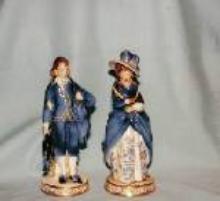

















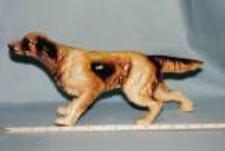

















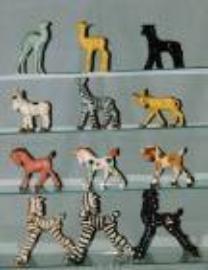




Arthur and George

Arthur and his father















































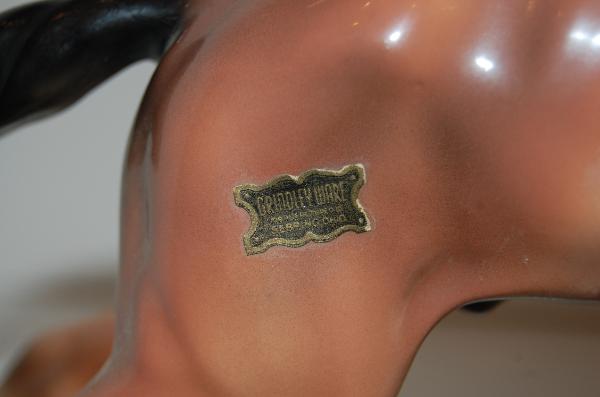






















































































Photos courtesy of Linda Moffitt




Photos from Sandy Metzler


